
by Kathryn Brenne

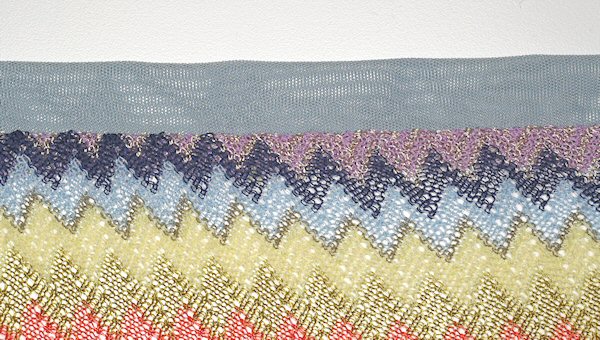
stretch mesh finish
Matching ribbed fabric to finish off edges of sweater knits is extremely difficult to come by. But, there are plenty of creative alternatives to trim your garment!
For instance, nylon spandex sheer, stretch mesh netting is suitable for edging fine knits. It is available in a wide range of colors. To make a band, determine the desired finished width of trim, multiply by two and add 1 1/4". The length of the band should measure approximately 80% of the sweater edge. This ratio will vary depending upon the stretch of the mesh. Press the mesh in half. Make a 5/8" seam to create a tube. Trim seam allowance to 1/4". Quarter the tube and place pins at the quarter markings. Quarter the sweater edge. Match the band's quarters to the sweater quarters. Seam the band to the sweater with a 5/8" seam allowance. Stretch the band to fit the sweater edge as you sew.
I like to test the ratio on a sample first to determine how much the mesh will pull in the edge of the sweater knit. Cut a fabric sample 10" long. Cut a sample banding 8" long. Sew the band to the sample and evaluate the result to see if you like the amount it is pulling in. Adjust as necessary.
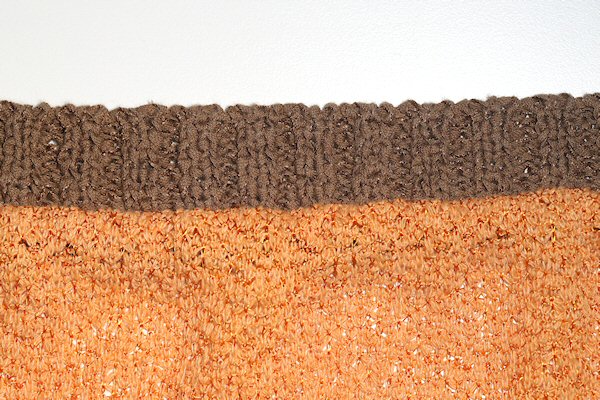
sweater ribbing repurposed from old sweater
If you are a hand knitter, try hand knitting ribbing and then attaching it to fabric edges. For sleeve edges you can get really creative: for instance, try using the cuff off of a pair of socks sewn to the edge of the fabric. I found a lovely second hand sweater in good condition at a thrift shop for $3.50. I cut off the ribbing, 3/8" above the last row of ribbing and sewed it to the fabric edge for a nice finish. You can use the same technique as detailed above for nylon mesh.
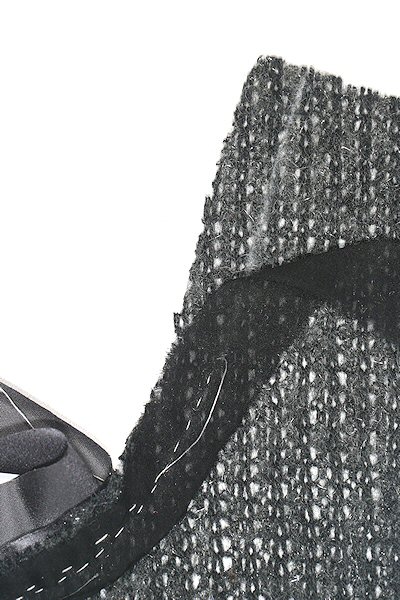
hand stitch silk chiffon as stay tape
A bias binding can work on many knits and give a pretty finish. For the grey sweater top I used silk charmeuse to create a beautiful binding.
I cut strips of bias 2" wide. I purchased 1/2 yard of silk charmeuse, which gave me strips long enough to trim the neckline in one piece. The Design Plus stay tape I used on the bulky sweater knit fused too stiff to use as a stabilizer. Instead I used strips of silk chiffon as a stay tape. Tear 1" strips of silk chiffon (tearing gives a softer edge than cutting). Begin by chalking the stitching line on the wrong side of the neckline. Hand stitch the chiffon to the wrong side of the neckline using a running stitch. Use the pattern as a guideline to make sure that you are not stretching the neckline as you work. The hand stitching should be centered on the chiffon, just inside of the chalked stitching line.
Assemble the shoulder seams. Baste the silk charmeuse bias, right sides together, to the neck of the garment. Pull on the bias tape, stretching it around the curves. The bias tape will curl and stand up slightly. This will give a smooth finish once completed. Machine stitch the bias to the garment with a 5/8" seam allowance. Press the edge of the seam flat, but do not flatten the curled bias strip. Press the silk chiffon towards the seam allowance. Trim the seam allowance down to 3/8".

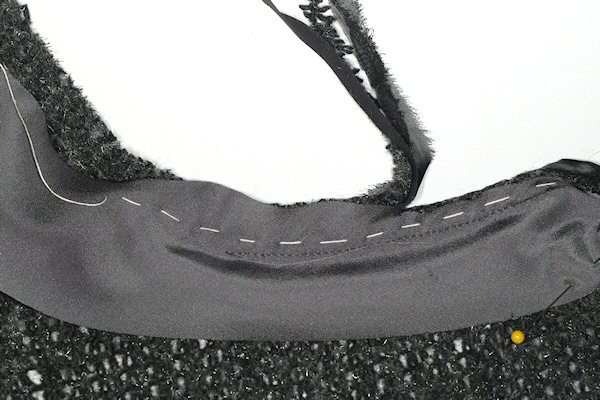
baste, stitch and trim bias and chiffon stay tape

turn, baste and stitch in the ditch
Wrap the bias over the seam allowance being careful that it doesn't wrinkle or pull. Baste by hand to hold. Use an edge stitching or edge joining foot with the needle in the center position to stitch in the ditch through all layers.
Trim the bias close to the stitching on the inside of the garment. Since it is cut on the bias the raw edge won't fray, and this technique will result in a much cleaner look on the outside of your garment.

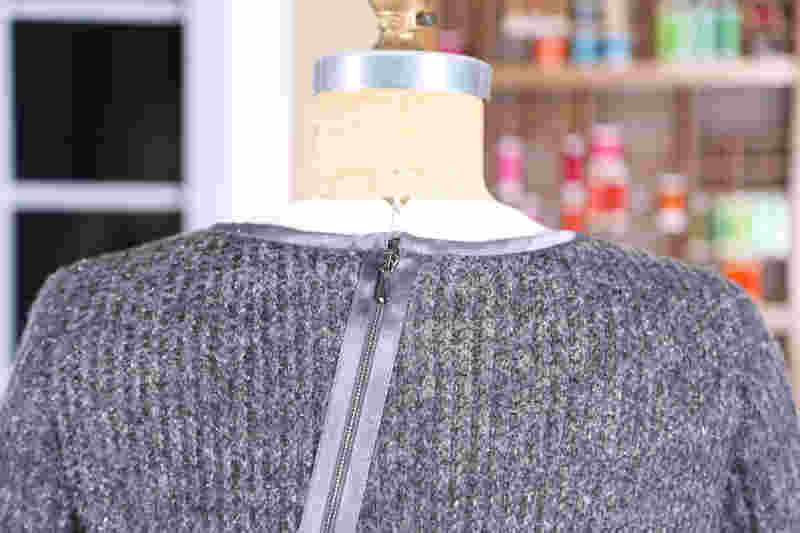
finished silk binding, front and back

mock ribbing technique close-up
I wanted to create my own textured rib knit for the sleeves of the bulky sweater jacket. I chose a black ponte knit for this project, but other knit fabrics can be used with great success. I used a twin needle with a needle spacing of 4mm, a pintucking foot, two spools of thread, a straight stitch set at a stitch length of 3mm and increased the upper tension slightly. I cut a length of fabric a few inches longer than the desired finished length of the sleeves. Chalk a line to mark the first row of stitching, which should run parallel with the grain of the fabric. As you sew, the twin needle will create a pintuck. Experiment with the placing of pintucks. I ended up aligning 10 rows of pintucks with the previous pintuck sitting in the groove of the foot.
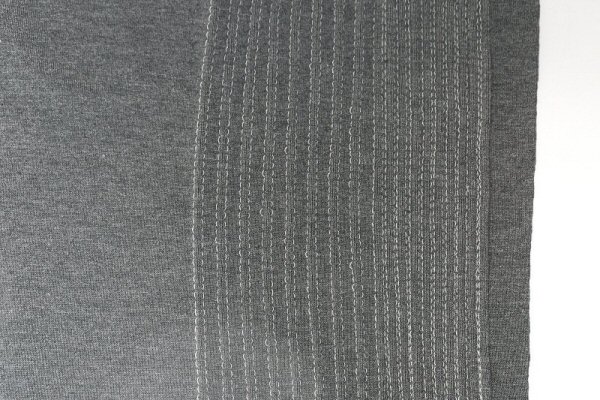
mock ribbing technique
After 10 rows of close ribbing, I then aligned the edge of the foot with the last row of stitching and stitched 5 rows of wider pintucks before returning to close ribbing. This is just one design possibility; create your own design pattern to achieve the look you want.
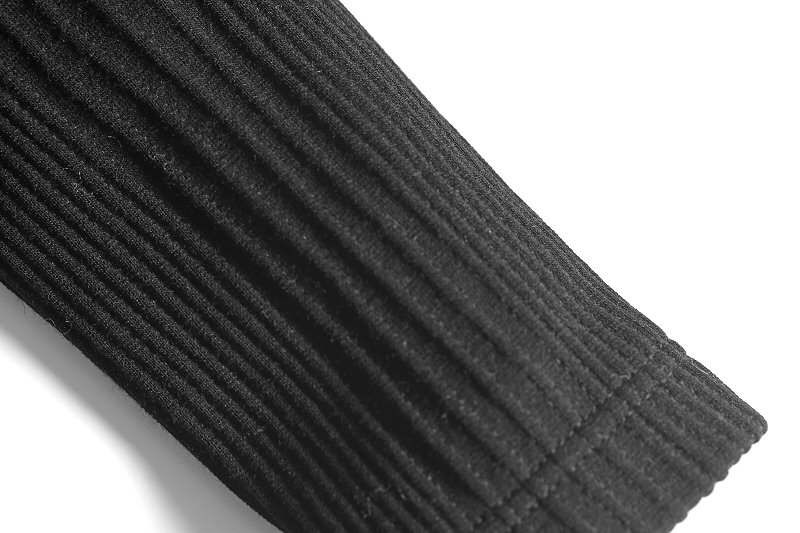
mock ribbed sleeve
The amount of fabric required will depend on the thickness of the fabric and the spacing of the pintucks. It took a bit of time stitching out all of the rows for two sleeves but the effect worked well. Remember, mock ribbing does not equal the stretch found in machine ribbing. It will only stretch by the amount of the stretch found in the base fabric. The ribs are not true ribs.

